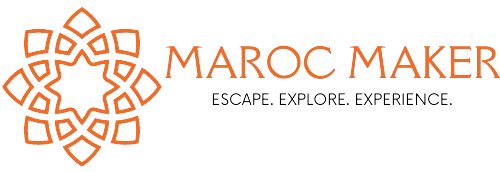Moroccan dress, a kaleidoscope of colors, intricate patterns, and cultural symbolism, stands as a testament to the rich tapestry of Morocco’s heritage. Beyond mere garments, Moroccan attire tells a story of centuries-old traditions, regional diversity, and the enduring influence of historical encounters.
At the heart of Moroccan dress lies a deep connection to tradition. The quintessential attire for both men and women is the “djellaba,” a loose-fitting, hooded robe. Djellabas, often made from fine fabrics like silk or cotton, are not merely garments but a reflection of cultural identity and regional variations.
1. Traditional Garb

2. Berber Influence
In the rugged landscapes of the Atlas Mountains, Berber communities contribute their distinct flair to Moroccan dress. Women adorned in vibrant handwoven “hays” (shawls) and silver jewelry showcase the Berber influence. The intricately embroidered patterns on their attire often convey familial or tribal affiliations.

3. Urban Elegance
In bustling cities like Marrakech and Fes, urban Moroccan dress marries tradition with contemporary aesthetics. The caftan, a long, flowing gown, epitomizes elegance. Embellished with delicate embroidery, sequins, and intricate designs, the caftan is donned during special occasions, embodying sophistication and grace.
5. Festive Attire

4. Coastal Flair
Coastal regions, including cities like Essaouira and Casablanca, infuse a maritime influence into Moroccan attire. Flowing fabrics in shades mirroring the sea, lightweight tunics, and maritime-themed accessories capture the essence of coastal life.
Moroccan festivals and celebrations witness a flourish of color and opulence in dress. Elaborate headpieces, known as “takchitas,” complement the traditional attire of women. These festive garments are characterized by layers of rich fabric, intricate embroidery, and a profusion of accessories.
6. Symbolism in Design:
Every element of Moroccan dress carries symbolic meaning. From the geometric patterns inspired by Islamic art to the use of colors reflecting cultural significance, each design choice conveys a deeper narrative embedded in Morocco’s history and values.
7. Craftsmanship:
Moroccan dress is a celebration of craftsmanship. Artisans meticulously handcraft garments, ensuring that each piece is a unique work of art. Traditional methods such as hand embroidery, weaving, and dyeing contribute to the authenticity of Moroccan attire.

8. Global Impact:
In the modern era, Moroccan dress has transcended borders, influencing global fashion. Designers draw inspiration from the vibrant color palettes, intricate designs, and luxurious fabrics intrinsic to Moroccan attire, showcasing its enduring allure on international runways.
Moroccan dress is more than fabric and thread; it is a living expression of a nation’s history, culture, and artistic prowess. From the ancient streets of the medinas to the grand celebrations, Moroccan attire weaves a narrative of elegance, tradition, and the enduring beauty that transcends generations. As we continue to appreciate the artistry of Moroccan dress, we find ourselves not only adorned in fabric but draped in the timeless stories of a captivating and culturally rich land.











REASONS TO LOVE MOROCCO VISIT MOROCCO - Maroc Maker | Morocco Travel Guide - Moroccan Blog
[…] MOROCCAN CHIC […]